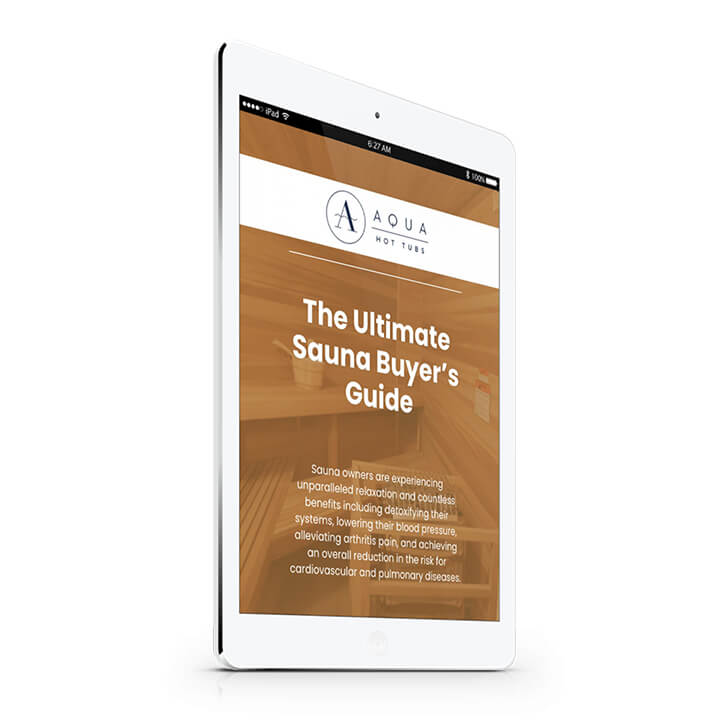In 2020, 61% of businesses embracing automation didn’t just meet their revenue targets—they surpassed them. Years later, it’s clear that an automated sales funnel can do far more than streamline processes; it can revolutionize how your business engages with potential customers. Gone are the days of cumbersome, manual methods. Automation introduces a seamless, more engaging customer journey from the first “hello” to the final “thank you”.
According to insights from Gartner Research, companies that dive deep into automated lead management can expect a revenue uptick of 10% or more within just 6-9 months. We’ve seen the truth of this with our own eyes, working alongside numerous small businesses.
It’s clear to us: while setting up an automated sales funnel requires an initial investment of time and resources, the payoff is substantial. These funnels not only generate, nurture, and convert leads on autopilot but also become a self-funding engine of growth, making them an indispensable asset for any small business pressed for time.
Whether you’re a small business owner or a marketing leader, this introduction to automated sales funnels is designed with you in mind. As we delve into the nuts and bolts of automated sales funnels, we’ll demonstrate how this modern marketing solution can streamline your operations, enhance your marketing strategies, and drive your business forward.
Understanding Automated Sales Funnels
First, let’s get clear on what an automated sales funnel is: a streamlined, technology-driven approach designed to efficiently guide potential customers from initial interest to the final purchase, with minimal manual effort. Automated sales funnels seamlessly integrate various components to attract, engage, and convert leads through personalized communication.
Key Components of an Automated Sales Funnel:
- Lead Magnet: At the heart of every automated sales funnel is a compelling lead magnet—a valuable piece of content or offer that entices potential customers to engage with your brand. Whether it’s an e-book, webinar, free trial, or exclusive discount, the lead magnet serves as the initial incentive for prospects to enter your funnel.
- Lead Capture: Once a prospect expresses interest by engaging with your lead magnet, the next step is to capture their contact information. This is typically done through optimized landing pages or website forms strategically placed to encourage conversions. By collecting email addresses or other relevant details, you can begin nurturing these leads through targeted communication.
- Lead Nurturing: Effective lead nurturing is the cornerstone of any successful automated sales funnel. Through a series of automated emails, personalized content, and timely follow-ups, you can nurture leads along their buyer’s journey. By delivering relevant information, addressing pain points, and building trust, you keep prospects engaged and primed for conversion.
- Qualification and Scoring: Not all leads are created equal, which is why automated sales funnels often incorporate lead qualification and scoring mechanisms. By tracking user interactions, engagement levels, and other behavioral indicators, you can identify high-potential prospects and prioritize them for further outreach. This ensures that your sales team focuses their efforts where they’re most likely to yield results.
- Conversion: Ultimately, the goal of an automated sales funnel is to drive conversions. Whether it’s making a purchase, signing up for a service, or requesting more information, the conversion stage is where prospects become paying customers. Through targeted messaging, persuasive calls-to-action, and seamless user experiences, you guide leads toward taking the desired action.
Automation transforms the sales funnel by ensuring efficient lead management and enhanced customer experiences at every stage. From effortless lead capture to sophisticated nurturing strategies, it prioritizes and progresses leads toward conversion with precision. This approach not only saves time but also optimizes resources, making every interaction count.

Example of an Automated Sales Funnel in Action
Let’s further illustrate this with an example of a simple yet effective sales funnel we recently created for a client.
The client, a commercial video production company, aimed to increase engagement and convert more leads into customers. To kickstart this journey, we initiated a targeted ad campaign to drive traffic to the funnel, ensuring a wider reach and engaging a more significant number of potential leads right from the start. A crucial advantage of this approach is the flexibility it offers; once the ads and funnel assets are set up, they can be easily turned off and then back on whenever the client needs to generate more leads, making it a highly efficient and adaptable marketing solution.
Our funnel design began with a compelling lead magnet: an e-book titled, “5 Production Pitfalls That Make Videos Flop.” To capture these leads, we implemented a conversion-oriented landing page focused on commercial video production, featuring a prominent pop-up inviting visitors to “grab our new e-book.” This step effectively filtered and captured the interest of potential clients.
Following the initial capture phase, we deployed an automated 5-email sequence to deliver the lead magnet, nurture the leads, and then strategically call them to action. The qualification process involved automated lead engagement tracking and segmentation based on actions taken by the leads, enabling us to tailor our approach according to their interest levels and engagement patterns.
The conversion phase was carefully orchestrated through the final email in the automated sequence, which clearly called the leads to action and directed them to a conversion-oriented landing page. This page was designed with a form to “get a quote for your project,” serving as the culmination of the funnel and facilitating a smooth transition from interested leads to committed customers.
This funnel, bolstered by the initial ad campaign, exemplifies how automated processes can be finely tuned to address specific business needs and customer journeys. By integrating targeted ads to drive traffic into the automated sales funnel and leveraging the on-demand flexibility to activate or pause the campaign as needed, we not only increased the pool of potential leads but also ensured that the entire funnel was optimized for engagement and high conversion rates.
The Benefits of Marketing Funnel Automation
Incorporating marketing automation into your business strategy offers a multitude of benefits. Automated sales funnels not only save time but also enhance the effectiveness of your marketing efforts across the board.
- Increased Efficiency: Automation significantly reduces the manual tasks associated with lead management, from data entry to lead nurturing. This allows your team to focus on strategy and creativity, rather than getting bogged down in repetitive tasks.
- Improved Lead Nurturing: With automation, each lead receives personalized attention based on their actions and interests. This ensures that your messaging is always relevant and engaging, increasing the likelihood of conversion.
- Better Lead Qualification: Automated scoring systems prioritize leads based on their engagement and readiness to buy, ensuring that your sales team focuses their efforts on the leads most likely to convert.
- Enhanced Customer Experience: By providing timely, relevant, and personalized communication, automated funnels improve the overall customer experience, building trust and loyalty even before a purchase is made.
- Higher Conversion Rates: The culmination of efficiency, personalized nurturing, and targeted efforts results in higher conversion rates. Automated funnels are designed to move leads through the buyer’s journey more effectively, leading to more sales and revenue.
- Data-Driven Insights: Automation tools provide valuable insights into your marketing funnel’s performance, allowing you to make data-driven decisions to optimize your strategy continually.

Incorporating automation into your marketing funnel isn’t just a matter of keeping up with the latest technology—it’s about actively enhancing your ability to attract, engage, and convert leads more effectively.
How to Build Your First Sales Funnel Automation
Let’s walk through a step-by-step guide on setting up your automated sales funnel, focusing on strategies and tools that can streamline the process, including some recommendations from the Flyrise sales funnel services team.
Step 1: Zero in on Your Audience and Goals
Start with a laser focus on who you’re talking to and what you want them to do. Every element of your funnel should speak directly to your audience’s needs and lead them toward your desired action, be it signing up, making a purchase, or another conversion goal.
Step 2: Select Your Toolkit
Your choice of tools is crucial. You need a CRM that can handle your customer data, an email platform for communication, and a landing page builder for your lead magnets. Flyrise recommends combinations that work seamlessly together, ensuring that your funnel runs without a hitch. Explore popular options like HubSpot for CRM, Mailchimp for emails, and WordPress with Elementor for landing pages, as these can offer the flexibility and integration capabilities you need.
Step 3: Craft an Irresistible Lead Magnet
Your lead magnet is the beacon that attracts leads. Whether it’s a comprehensive guide, a free trial, or an exclusive webinar, make sure it’s something your audience finds too valuable to pass up. This is about offering real value in exchange for their contact information.
Step 4: Build a Compelling Landing Page
The landing page is where your lead magnet lives. It should be clear, concise, and designed to convert. Highlight the benefits of your offer and include a simple, straightforward form to capture lead information. Tools like Unbounce or Leadpages specialize in creating high-converting landing pages and can integrate well with most email marketing platforms.
Step 5: Automate Your Email Sequence
Once you’ve captured a lead, the nurturing begins. Set up an automated email sequence that educates, informs, and gently nudges your leads down the funnel. Each email should bring value and guide them closer to your end goal. Automating this process ensures no lead gets left behind.
Step 6: Drive Targeted Traffic
A funnel is useless without traffic. Use SEO, content marketing, social media, and paid ads to get your target audience to your landing page. The channels you choose should match where your audience spends their time and where they are most receptive to your message.
Step 7: Measure, Learn, and Optimize
Finally, the work isn’t done once your funnel is live. Use analytics to measure performance, identify bottlenecks, and understand what’s resonating with your audience. Continuously refine and optimize your funnel based on data-driven insights.
Keep in mind, if navigating the DIY route for setting up an automated sales funnel feels daunting, or if there’s concern about getting the automation just right on your own, you essentially have two main options: opting for a professionally managed, done-for-you sales funnel service or utilizing a funnel builder tool. Each path offers distinct advantages depending on your needs, expertise, and the complexity of your sales strategy.
What is a Funnel Builder?
A funnel builder is essentially a toolkit that helps you guide potential customers through their buying journey, from the moment they learn about your product or service to the point they make a purchase. It’s a software solution that allows you to create landing pages, email sequences, and various other components of a sales funnel, all aimed at converting visitors into customers.
While options like ClickFunnels offer a broad set of tools for those looking to quickly deploy sales funnels with minimal fuss, it’s crucial to recognize the value of customization in funnel building. ClickFunnels, and similar platforms, provide a solid foundation, especially for those new to funnel building.
The Best Funnel Builders on the Market
Although there are countless funnel builder solutions to choose from, several stand out for their robust features and user-friendly interfaces. Here’s a quick look at some top contenders:
- ClickFunnels: Renowned for its comprehensive features, ClickFunnels simplifies the process of building sales funnels. It’s especially beneficial for entrepreneurs and businesses looking to launch funnels quickly without deep technical expertise.
- Leadpages: Focused more on landing pages, Leadpages is great for businesses prioritizing high-converting entry points to their sales funnels. Its easy-to-use templates and A/B testing capabilities make it a strong option for small to medium-sized businesses.
- Unbounce: With a strong emphasis on landing page design and optimization, Unbounce offers advanced features like dynamic text replacement and integrates well with other marketing tools, making it ideal for marketers looking to maximize conversion rates.
- HubSpot: Offering a more holistic approach, HubSpot’s funnel builder is part of a larger suite of inbound marketing tools. It’s best suited for businesses looking for an all-in-one solution that not only helps with funnel creation but also CRM and customer service.
Selecting the right funnel builder depends on your specific needs, such as the complexity of your sales process, the size of your business, and your technical expertise. Consider the scalability of the platform, its integration capabilities with other tools you use, and the level of customer support provided.
Leveraging Professional Sales Funnel Services for Maximum Leads
Before you dive into the DIY or templated funnel builder route, keep in mind that setting up your automated sales funnel right from the start is crucial—it’s an initial investment of time and effort that pays dividends by running on autopilot, continuously generating and nurturing leads for your business. The strategy behind your funnel is key; it needs to be thoughtful and tailored to your specific audience and objectives to be effective.
This is where the expertise of a digital marketing company like Flyrise can make a significant difference. Specializing in automated sales funnels, our sales funnel specialists bring the necessary insight and experience to ensure your funnel is not only correctly set up but also optimized for the best results from the get-go. Working with a professional team gives you a better chance of nailing your strategy the first time around, making this investment well worth it for the long-term efficiency and success of your marketing efforts.

Ready to Leverage an Automated Sales Funnel for Lead Generation & Nurturing?
From the first hello to the final thank you, automation smooths out the ride for every potential customer, ensuring no one slips through the cracks. Whether you’re drawn to a straightforward setup with a funnel builder like ClickFunnels, or you’re looking for a more customized approach that fits your brand and audience like a glove, our team at Flyrise is here to help you maximize your investment.
Our experts are equipped to optimize your strategy, guiding you through the setup or refinement of your automated sales funnel. With us, you’re not just building a funnel; you’re setting up a powerful lead-generation and nurturing machine that is tailored to your business and target audience.
Ready for growth? Connect with Flyrise today, and let’s start crafting an automated sales funnel that transforms your lead management process, making attracting, nurturing, and converting leads simpler and more effective than ever.
